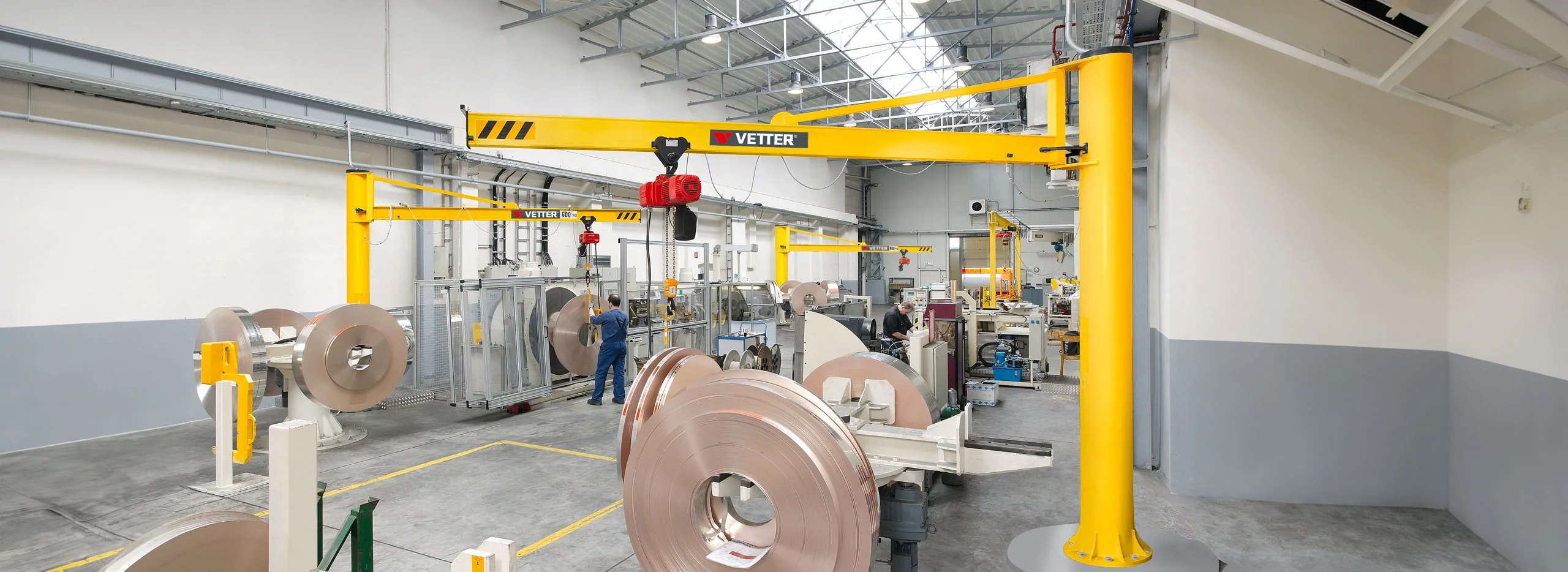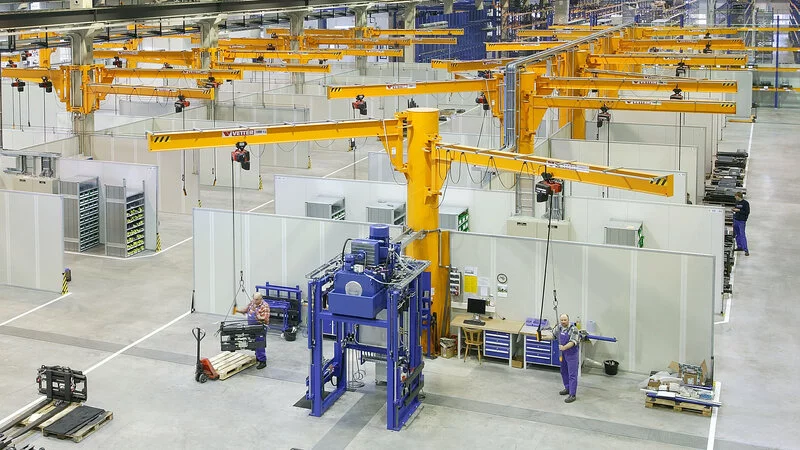PROCESSING INDUSTRY
Cranes for the plastics, metal, and aluminium processing industry
VETTER cranes efficiently and reliably support any production area. They are used for feeding of CNC machines, as conventional shop crane for individual workplaces, for loading and unloading of conveyor belts, or as gantry cranes to link several workplaces. Thanks to the modular design, our customers do not only obtain standard but even tailored solutions.
Perfect production processes due to reduced waiting times, increased ergonomics, and more efficient processes – our customers always benefit from VETTER cranes.

